Modern Halloween costumes like naughty nurses and French maids wouldn’t spook an evil spirit. But there was once a practical need for a dark and foreboding style of dress: it was believed that dressing like death would trick evil spirits into thinking you were a fellow spirit.
Many European traditions dictated that the end of October was a time when magic was the most potent. It was believed that spirits could contact the physical world, especially considering the precarity of food access.
Discover more about the history of Halloween in the following sections:
Halloween’s regional differences
How has Halloween history affected celebrations of it today? Are candy, costumes, and commercialization distracting us from placating demons to ensure a bountiful harvest? Contemporary celebrations forget centuries of holiday history that contributed to its traditions and symbols, dragging the celebration through pagan, Christian, and secular pasts.
In many European countries, frivolous Halloween is less important than the somber All Saints Day (1 November). On this day, families place flowers on the graves of loved ones and attend mass. In reality, much still connects the two holidays. Mexico’s Day of the Dead (Día de los Muertos in Spanish) is perhaps the perfect fusion of the two days, using major festivals and morbid costumes as a way to honor the dead.
Many Halloween traditions come from a library of rich stories – some myth, some fact – that help explain why we carve pumpkins, bob for apples, or go trick-or-treating.
The actual history of Halloween
The name Halloween – or Hallowe’en (a contraction of All Hallows’ Evening or All Hallows’ Eve – is a reference to the day before the Christian holiday of All Hallow’s Day or All Saints’ Day. All Saints’ Day is a Christian holiday for remembrance of martyrs, saints, and the deceased.
The origin of Halloween is likely pagan. It bloomed from the dark nights of the ancient Celtic festival of Samhain (meaning ‘summer’s end’ in Gaelic), when people would light bonfires and wear costumes to ward off roaming ghosts.
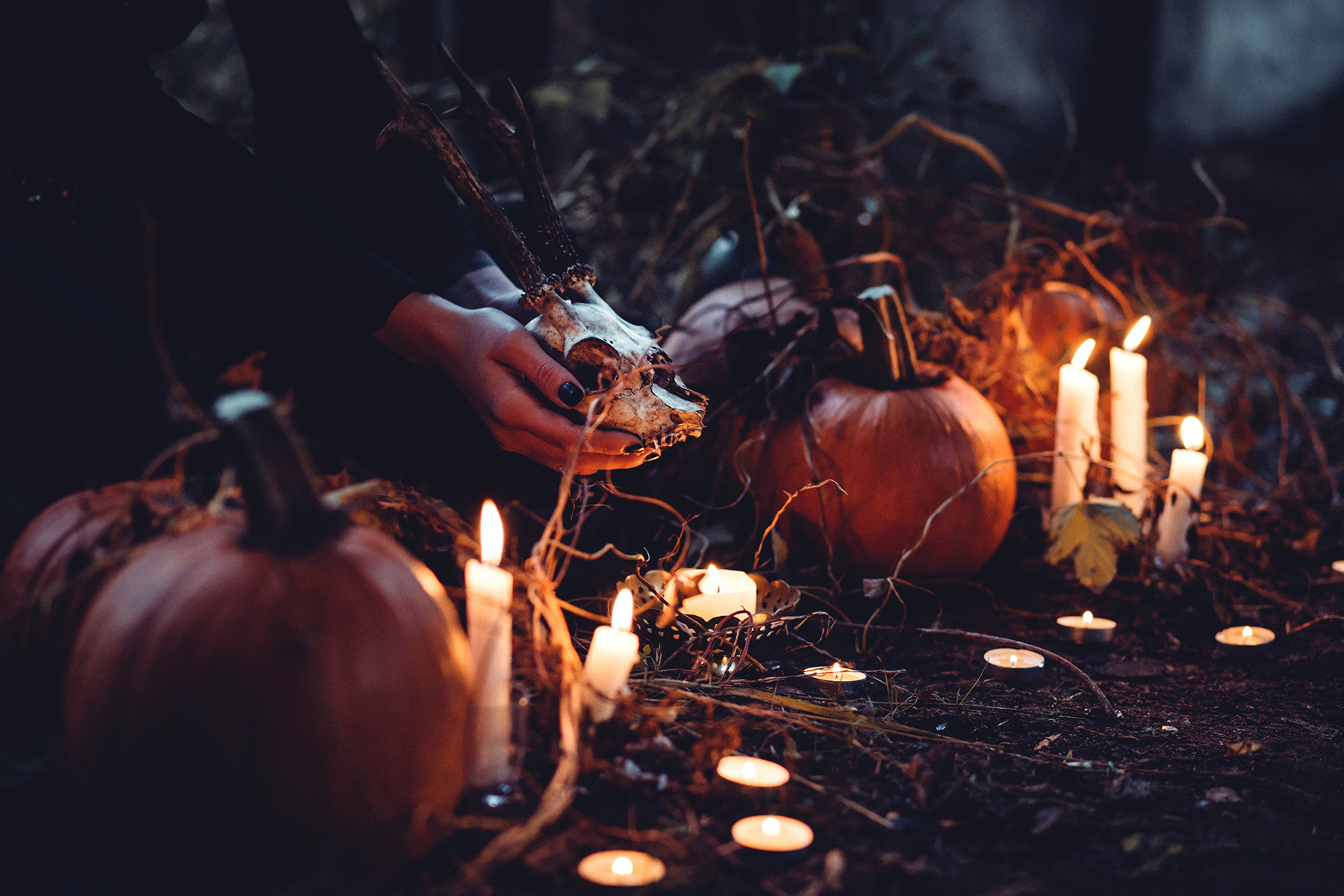
Celts celebrated their new year on 1 November; harvests ended and the cold, harsh winter began – a time typical of many deaths. They believed the boundaries between life and death blurred on the eve of each new year – 31 October – when ghosts of the dead returned to earth causing havoc and destroying crops.
But it was also a time when people, typically Druids or Celtic priests, could make predictions to comfort those facing a long, dark winter. But after the Romans invaded around 43AD, Christianity became infused with and supplanted Celtic traditions over the next 400 years of rule.
Christianity taking over
In the eighth century, Pope Gregory III dedicated 1 November to honor all saints and martyrs. By 1000 AD, the church introduced All Souls’ Day on 2 November, in attempt to replace Celtic traditions with an official church holiday. The Christian holiday adopted Samhain’s symbols, including the bonfires, parades, and costumes.
All Hallows or All Hallowmas comes from Middle English Alholowmesse, meaning All Saints’ Day. The night before – the traditional celebration of the Celtic religious festival Samhain – took on the name All Hallows Eve and, eventually, Halloween. But over time, Halloween has largely left behind its pagan and Christian origins to become a secular holiday, particularly in North America.
From faith to commerce
The United States didn’t observe these holidays until Irish and Scottish immigrants arrived in the mid-1800s, bringing a mash of traditions with them. Stemming from Celts’ prediction practices on Samhain, young women believed that Halloween was the day they could divine the name of their future husband. They did so by doing tricks with mirrors, apple parings, or yarn. Young women also dressed in costumes and went door-to-door asking for money or food, an early form of trick-or-treating.
There was a move in the United States to create a more community-oriented form of Halloween; less ghosts and pranks, more family-friendly gatherings and parties. They did so by encouraging newspapers and community leaders remove references to anything frightening or grotesque. By the 20th century, Halloween lost most of its superstitious elements; however, many of Halloween traditions come from exactly that.
Pumpkin carving – or turnips?
To distract wandering spirits from settling into their homes and farms, Celts once carved faces into turnips and set candles inside; this was a rudimentary form of today’s pumpkin carvings. Turnip lanterns lined roadways to light the way and also caution passing spirits.
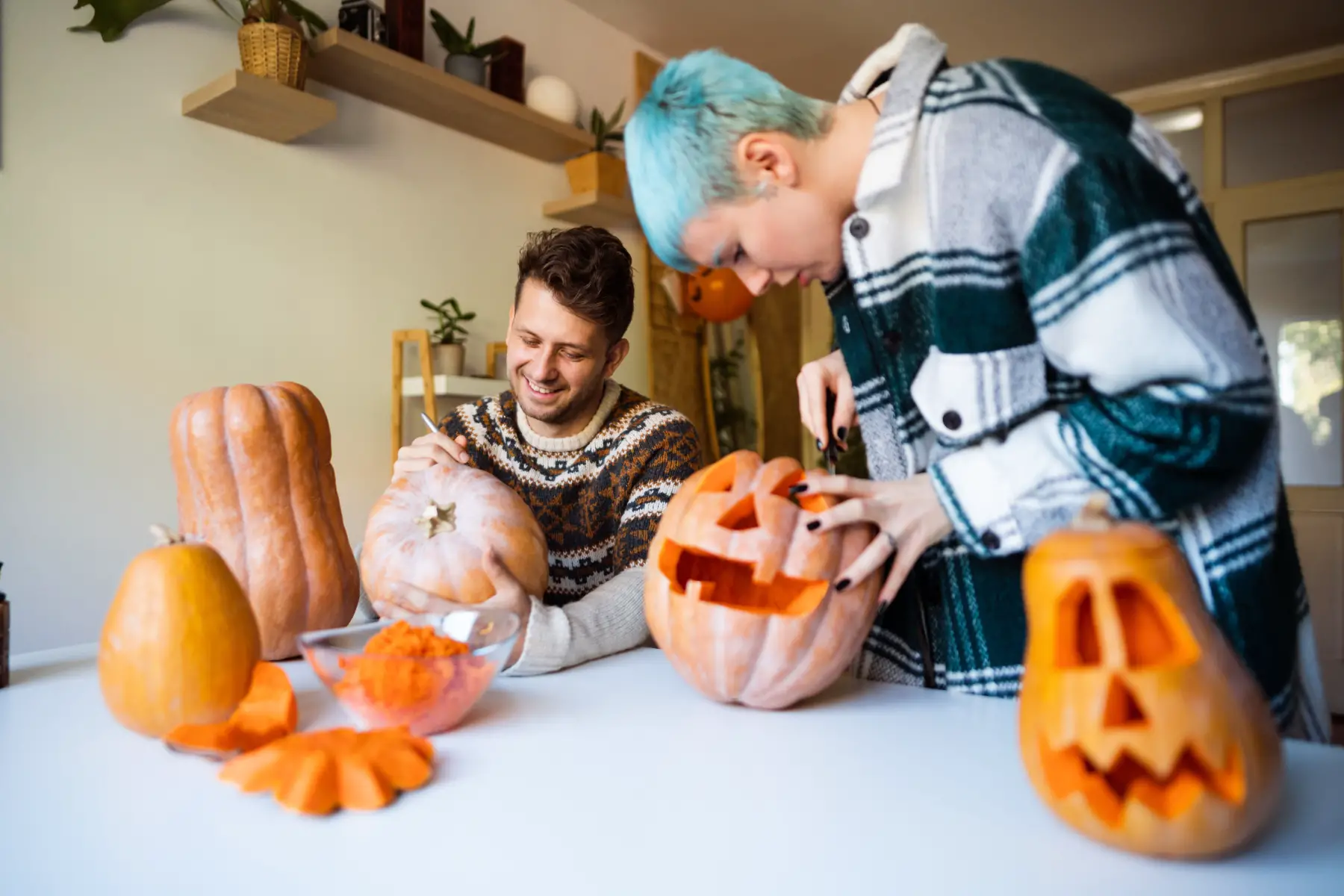
After these traditions were exported across the Atlantic, it wasn’t long before carved pumpkins (a gourd native to North America) began to show up. Halloween history made its grand turn towards its current form when Americans embraced carved pumpkins by the 1920s. Farmers began breeding better pumpkins for carving. Ultimately, farmer John Howden developed the Howden pumpkin in the 1960s, which is still the most popular carving pumpkin. The Howden pumpkin has a thick stem, shallow ribs, and thin flesh; these attributes make them easy to carve, though a nightmare for cooking with.
Jack-o’-lanterns: a hellish deal with Satan
Stepping away from the numerous legends surrounding the origin of Jack-o’-lanterns, they are thought to come from Irish folklore. A man named Jack managed to trap Satan, and Satan offered Jack a deal for his release. In exchange for Satan’s release, Satan agreed he would never take Jack’s soul. However, Jack’s life had been too sinful for heaven; as a result, Jack found himself between heaven and hell, in purgatory.
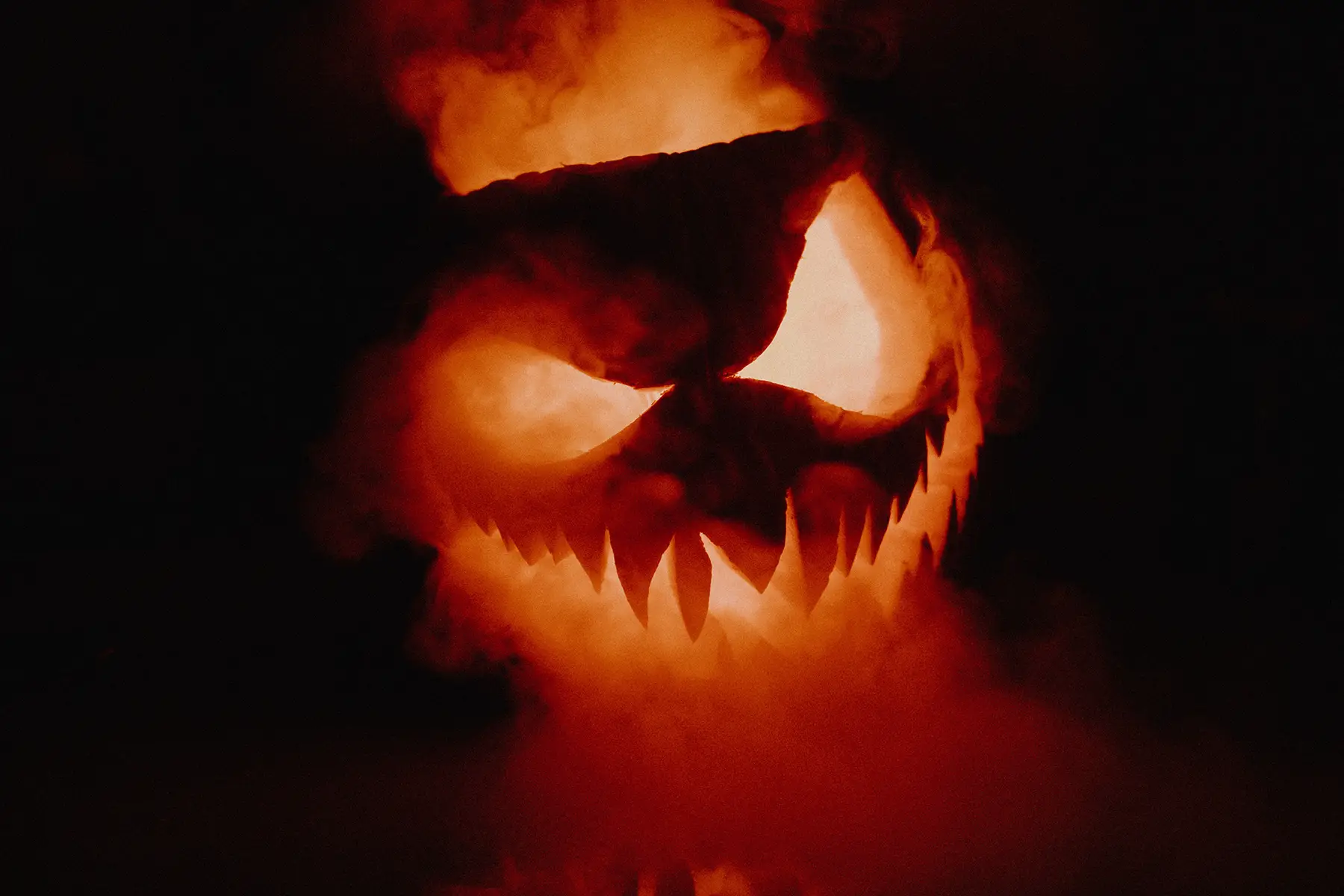
Jack, facing eternal wandering on earth, asked Satan for something to light his way. Satan tossed Jack a flame from Hades that would never go out. Jack carved out a turnip to place the ember, earning him the nickname of Jack of the Latern, or Jack-o’-lantern.
Jack used the lantern to guide his soul. Thus, Celts believed placing lit turnips outside would guide family spirits home; simultaneously, scary carvings repelled evil spirits.
Bobbing for apples: more than just a game
When the Romans swooped in on the Celts around 43 AD, a mixture of festivals ensued. Samhain combined with the Roman holiday of Feralia (a day in late October that also honored the dead) and the day dedicated to Pomona (the Roman goddess of fruit and trees). Pomona’s symbol is an apple; as a result, this is the likely source of the tradition of bobbing for apples on Halloween.

At some Halloween parties, the first successful apple-bobber would supposedly be next person in the room to wed. Numerous superstitions sprouted around this, considering the predictive nature of this special fruit: if you got the apple on the first try, you would find true love. However, if it took several tries, you would be fickle in love. Some young women would also place an apple under their pillow in order to reveal their future husband in their dreams.
Tricks, treats, or soul cake
Today, Halloween spurs 25% of overall candy in the United States. Children trekking from door-to-door in search of candy is a predominately modern American tradition. Although trick-or-treating is less popular in European countries, therein lies the secret to how this Halloween tradition started.
Celtic folklore believed that some spirits transformed into human form. They often did so as a beggar, to ask for money or food. Turning away the spirit would curse you eternally.
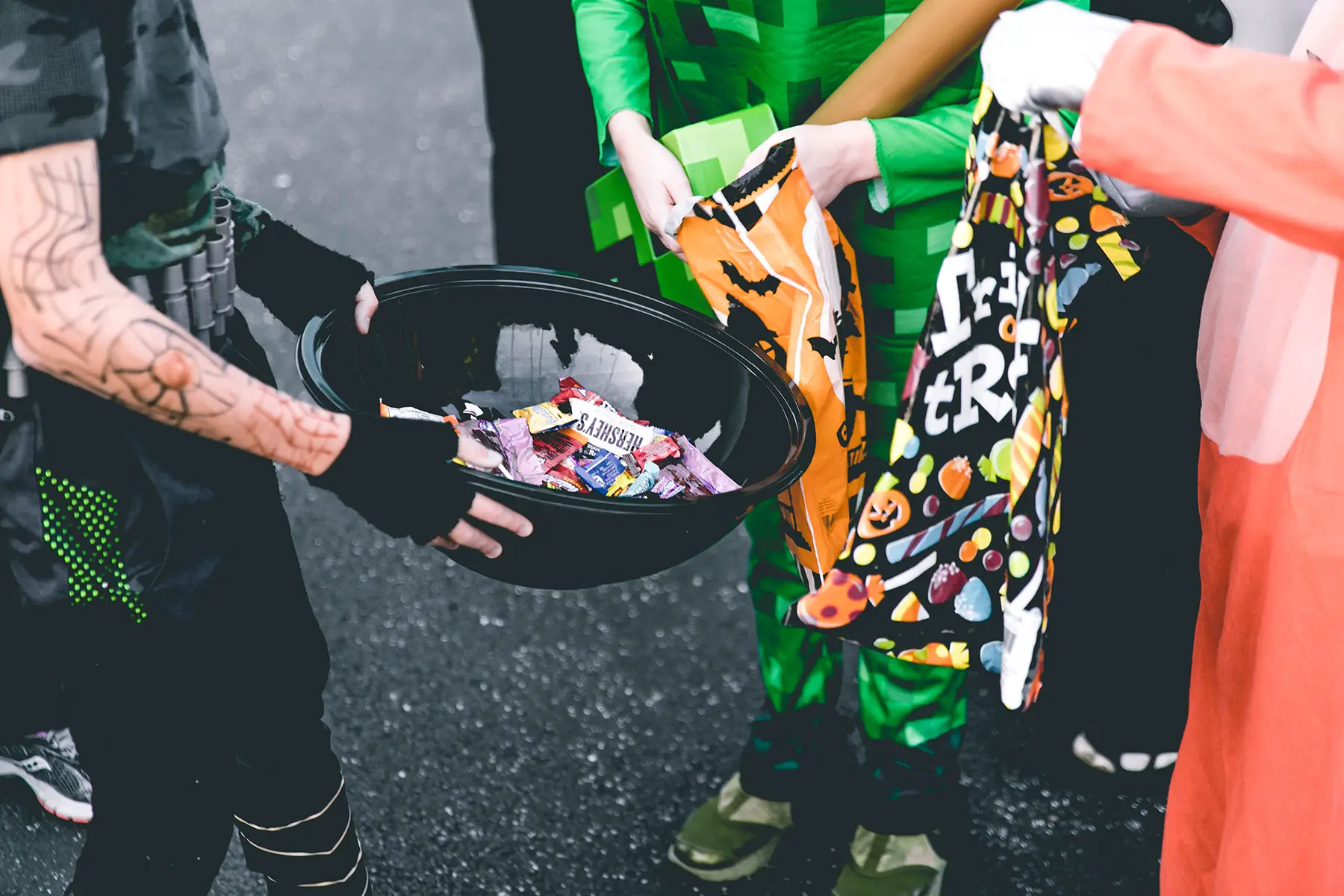
All Saints’ Day in England provides another source of this Halloween tradition. On this day, poor citizens begged families for food and receive pastries (known as soul cakes) in exchange for praying for a family’s’ deceased relatives. The church encouraged souling (the act of giving soul cakes) to replace the tradition of leaving out food and wine for roaming spirits. Eventually, children joined in by visiting their neighbors to ask for ale, food, and money.
English and Irish immigrants revived this practice after moving to the United States. This piece of Halloween history continually gained popularity in the United States; today, around 40 million trick-or-treaters join the candy-filled fun.
Halloween costumes
Halloween costumes have European origins. During the Samhain bonfire, communities burned crops and animal sacrifices. They also wore morbid costumes (such as animal heads or skins) to scare spirits.
Some say the bonfires attracted rodents and bats; now, these animals are symbols of Halloween. Others believed that if you were outside on the day ghosts returned to the living world, you might encounter a roaming spirit. People avoided this by dressing up to trick the spirits.
Halloween’s typical color scheme (orange and black) arose out of these autumn festivals. Orange represented crops and turning leaves, while black represented death and the transition to winter.
Halloween history turned towards commercialization in the 1900s; around this time, companies produced themed postcards and paper decorations. In the 1930s, Halloween costumes appeared in stores. Today, Halloween is a profitable holiday for costume, decoration, and candy manufacturers.
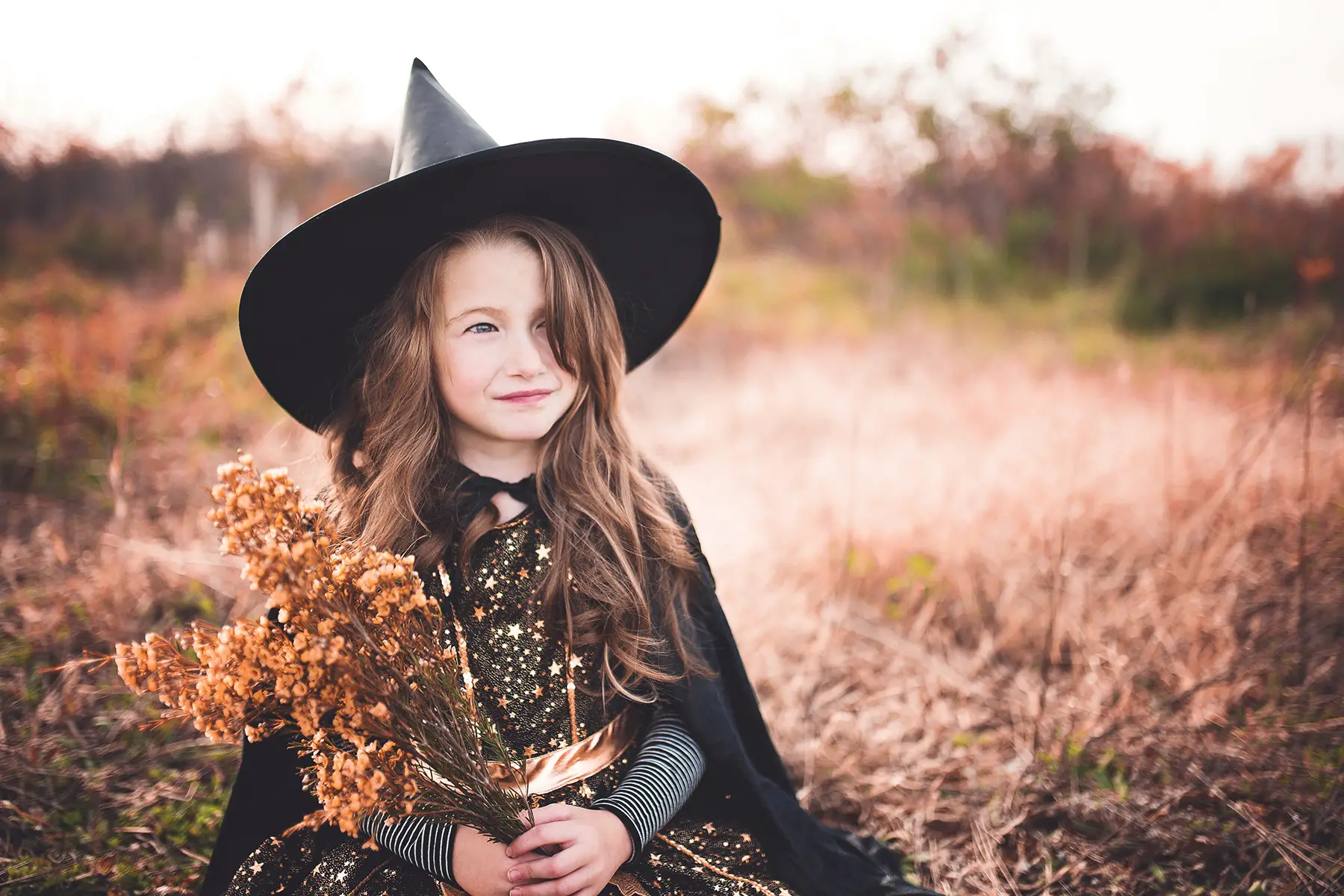
Modern-day costumes
Modern Halloween costumes still have a sense of morbidity; various Halloween symbols such as ghosts, zombies, and skeletons represent the contact between the spiritual and physical worlds. Witches and wizards are also common costumes, as Celtic Druids had predictive powers on October 31.
Haggard witches, on the other hand, reference the pagan mythological character known as the old crone, who was honored during Samhain celebrations. At that time, the crone actually symbolized change, wisdom, and the changing seasons; this is a vastly different image from the cackling, evil witches seen today. The crone’s cauldron represented the earth’s womb, where all souls went for reincarnation; stirring the pot allowed new souls to enter and old souls to be reborn.
Bats, black cats, and spiders were associated with witches. As a result, they’re the source of many superstitions that indicate death or the presence of spirits. Considering Halloween’s connection to death, Halloween’s common themes also involve blood, fire, gravestones, bones, and skulls.
Halloween superstitions
Halloween history is steeped in magic and mystery – and many superstitions. For friendly spirits, families would leave out table settings or place treats on their doorsteps to guide spirits. Today’s Halloween ghosts are considerably more scary and superstitions have evolved. Many avoid crossing the path of a black cat, for example; this stems from beliefs in the Middle Ages (when witches avoided detection by turning themselves into cats) and the Dark Ages (when witchcraft was common and cats were seen as demonic pets gifted by the devil).

History lost many Halloween rituals; this was particularly the case with rituals focused on the future. Outdated Halloween rituals actually focused on love; it was believed that young women could divine the name of their future husband and, with luck, be married before the next Halloween. An 18th-century Irish cook might have buried a ring in her mashed potatoes to catch an unsuspecting diner. Scottish women wrote men’s names on hazelnuts and tossed them in the fire; if a hazelnut burned to ash instead of pop, he became the woman’s husband.
to see which name burned to ashes rather than popping. Other women tossed apple-peels over their shoulders to see if they fell in the shape of a future husband’s initial.
Halloween in Europe
Similar to the world’s different approaches to Valentine’s Day, not every country follows the commercialized and Americanized variety of Halloween. Elsewhere, commerce has less traction in the Halloween history of individual countries; however, many places do still have traditions that are unique to them:
- Austria: Families leave bread, water, and a lit lamp on the table before they go to bed.
- Belgium: People often light candles in memory of their deceased relatives.
- Germany: Locals hide their knives from evil spirits.
- The Netherlands: Many Halloween customs are similar to those of Saint Martin’s Day. Dutch families celebrate this day on 11 November; historically, Saint Martin’s Day commemorated the beginning of the harvest season. Armed with handmade paper lanterns, children go door-to-door singing songs in return for candy.
- Sweden: Halloween is called Alla Helgons Dag in Sweden; Swedes observe it from 31 October until 6 November.
- United Kingdom: The English, Irish, and Scottish carved turnips and beets instead of pumpkins. Children would carry these scary root vegetables to their neighbors and receive money in return.
Halloween for a good cause
Contemporary Halloween isn’t purely about commercialization, however. Almost as a throwback to Halloween history, many families counter the elements of consumption, waste, and poor eating habits by helping others. In recent years, many parents send their children out trick-or-treating carrying a donation box with them. The United Nations International Children’s Emergency Fund (best known as UNICEF) originally started a donation drive in the United States in 1950 to raise awareness for children in war zones.
Today, UNICEF’s Halloween donation drive is observed globally, with hundreds of millions of US dollars in donations collected for nutrition, health, and protection programs for children worldwide.




